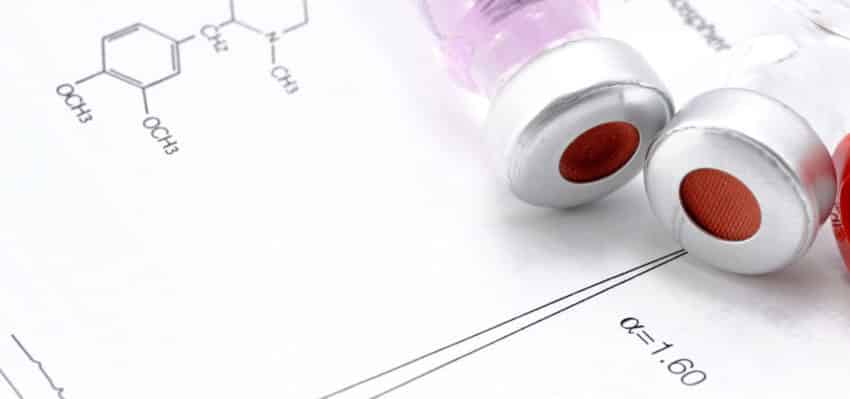Nitrosamines

Although nitrate, nitrite and nitrosamines are quite different in terms of their mode of action in the human organism, there is nevertheless a close connection between the three substances. After all, nitrate is a precursor of nitrite, and this in turn is transformed into nitrosamines in the body. Basically, nitrate, nitrite and nitrosamines are compounds consisting of the elements nitrogen and oxygen. Nitrogen is indispensable for plants, because it is the only way they can build up sufficient protein substances. Normally, they absorb it from the soil as nitrate. But due to the often very heavy fertilisation, there is now far too much nitrate in the soil, in the groundwater and thus ultimately also in various foods, with vegetables being particularly affected. Humans absorb this nitrate via groundwater, food and now also via cosmetics, and it is converted into other compounds in the organism: nitrite and nitrosamines. However, these have a negative effect on our health.
What is nitrate?
Nitrate is a substance that occurs naturally in our soils. It is essential for the growth of plants. However, in order to increase yields, nitrate is added to the soil in large quantities. This can be organic fertilisers such as liquid manure, slurry or dung, but also mineral fertilisers.
In principle, nitrate is not toxic. However, since the substance is a precursor of nitrite, it is still considered a concern.
What is nitrite?
Nitrite can be formed from what is actually harmless nitrate in food, but sometimes also in the human body through enzymatic conversion or during digestion by bacteria. Nitrite reacts with the human blood pigment haemoglobin and oxidises the iron contained in the pigment. The blood can no longer transport oxygen and the nitrite causes cyanosis, which can lead to a dangerous oxygen deficiency and breathing difficulties. The blood of infants and small children is particularly susceptible and therefore also at particular risk. For this reason, baby food and drinking water for babies should be particularly low in nitrite. But the substance is also highly questionable for adults: nitrite is considered toxic and is significantly involved in the formation of carcinogenic nitrosamines.
What are nitrosamines?
In the digestive tract, the combination of nitrite and amines can form the so-called N-nitroso compounds, to which nitrosamines belong. Nitrosamines are highly carcinogenic substances. The health risk generally affects all age groups equally. The most likely site of formation for nitrosamines is the human stomach, as the chemical conditions for transformation are optimal here. However, the substance is also found directly in some foods, such as beer, various fish products, cured meat products and cheese.
Nitrate, nitrite, and nitrosamines in cosmetics
Nitrosamines are known contaminants not only in food, but also in cosmetics. Corresponding complaints and controls by the testing facilities of the official food and cosmetics monitoring have already shown that the compound N-nitrosodiethanolamine is of particular importance in cosmetic products. N-nitrosodiethanolamine is a substance that can probably cause cancer in humans and induce changes in genetic material, i.e., it is genotoxic.
It has been classified as a category 1B carcinogen. However, the presence of such substances in cosmetic products is only tolerated in traces and only if they are completely unavoidable, taking into account all the requirements of manufacturing practice. The safety of the products for human health must not be in question under any circumstances. For a whole range of cosmetic raw materials, for example, maximum nitrosamine levels of 50 micrograms per kilogram have been set in Annex III of the EU Cosmetics Regulation. In addition, substances that are nitrosatable may not be used together with nitrosating substances. Example: Triethanolamine, which is used in many cosmetic products as an emulsifier or to stabilise the pH value and may contain small amounts of diethanolamine, may not be used together with certain preservatives that contain nitro groups. Such substances may include bronopol and bronidox.
Based on extensive experience in official testing facilities, it is now considered that for the majority of cosmetic products N-nitrosodiethanolamine levels above 10 micrograms per kilogram can be considered technically quite avoidable. For nail varnishes, a value of 20 micrograms per kilogram is considered realistic, for mascaras, the Federal Office of Consumer Protection and Food Safety suggests a value of 15 micrograms per kilogram.
In a spot check from 2013, several mascaras were found to contain significantly more toxic nitrosamines, in one case as much as 156 micrograms per kilogram, in two other cases 60 and 44 micrograms per kilogram respectively. According to an assessment by the Federal Office for Risk Assessment, the raw materials of the products in question must already have been far too contaminated. In the meantime, they are no longer allowed to be sold. The manufacturers reacted very differently to this: one producer could not understand the accusations, a well-known French cosmetics company even announced that the substance in the amount found had no negative effects on health. In fact, the amount of toxins in the individual products is not in itself harmful to health. However, since we humans are exposed to a whole range of nitrosamine sources in everyday life, medical experts urgently recommend limiting the intake and consumption of such products as much as possible or avoiding them altogether. Consumers should read the ingredients of the products carefully and, for example, leave out mascara with triethanolamine.
By the way: As a genotoxic carcinogen, there is no limit value for N-nitrosodiethanolamine at which a risk of cancer can be completely excluded. Rather, the minimisation or ALARA principle applies: a possible exposure of consumers must always be kept as low as can be achieved by reasonable means. ALARA is the abbreviation for “as low as reasonably achievable”.
Avoiding nitrosamines in cosmetics
Most nitrosamines have been shown to be carcinogenic in animal studies. However, the concentration of these compounds in cosmetic products is relatively low nowadays and does not in itself pose a health risk. Fortunately, responsible manufacturers do their utmost to avoid the harmful substances during production. A certain method known as “Apparent Total Nitrosamine Content Assays” is helpful in detecting N-nitroso compounds. The screening method requires special equipment that is quite labour intensive, but it is generally relatively straightforward and can be carried out in practically any good quality control analytical laboratory. The results obtained by this method must then be carefully interpreted and evaluated. For example, a positive result indicates a possible source of nitrosamine contamination, but the expected shelf life of the cosmetic product and the potential for levels to increase over time must be taken into account. Positive values also need to be further investigated and analysed for specific nitrosamines, as the method is easily susceptible to false positives. Until a more reliable standard procedure is available, it is possible to resort to different methods for the determination of individual nitrosamines. However, this determination in both cosmetic products and raw materials requires excellent and very sound expertise. Only in a state-of-the-art laboratory with experienced specialists is it possible to apply such methods safely and reliably. To actually ensure that harmful nitrosamines in cosmetic products are kept as low as possible, the following strategy is recommended:
1) The elimination of adventitious sources of nitric oxide and nitrite.
2) The reduction or elimination of secondary amino compounds.
3) The general use of raw materials that are completely free of nitrosamine contamination.
4) As an additional precautionary measure, the use of a nitrosamine formation inhibitor in the product formulation is recommended.
Cosmacon will revise appropriate formulations for you
Nitrate, nitrite, and nitrosamines should only be used in cosmetics in very small quantities, if at all. Cosmacon can help you to revise the relevant formulations. Please do not hesitate to ask us.
